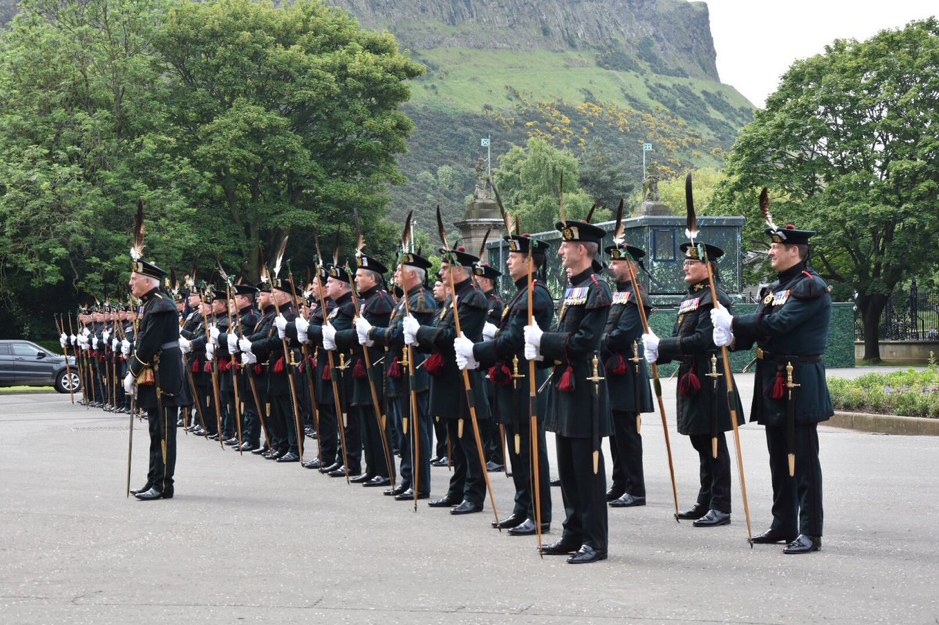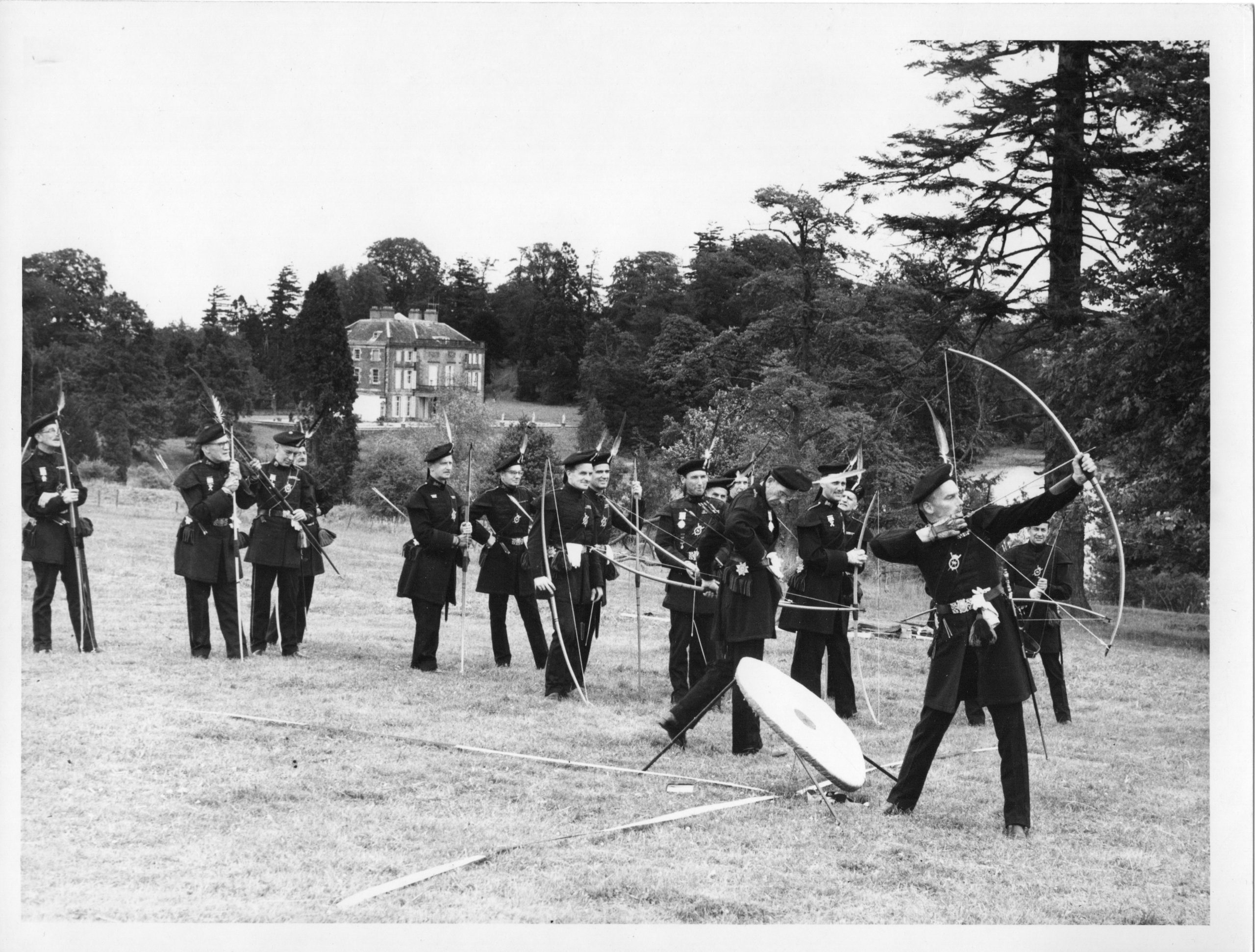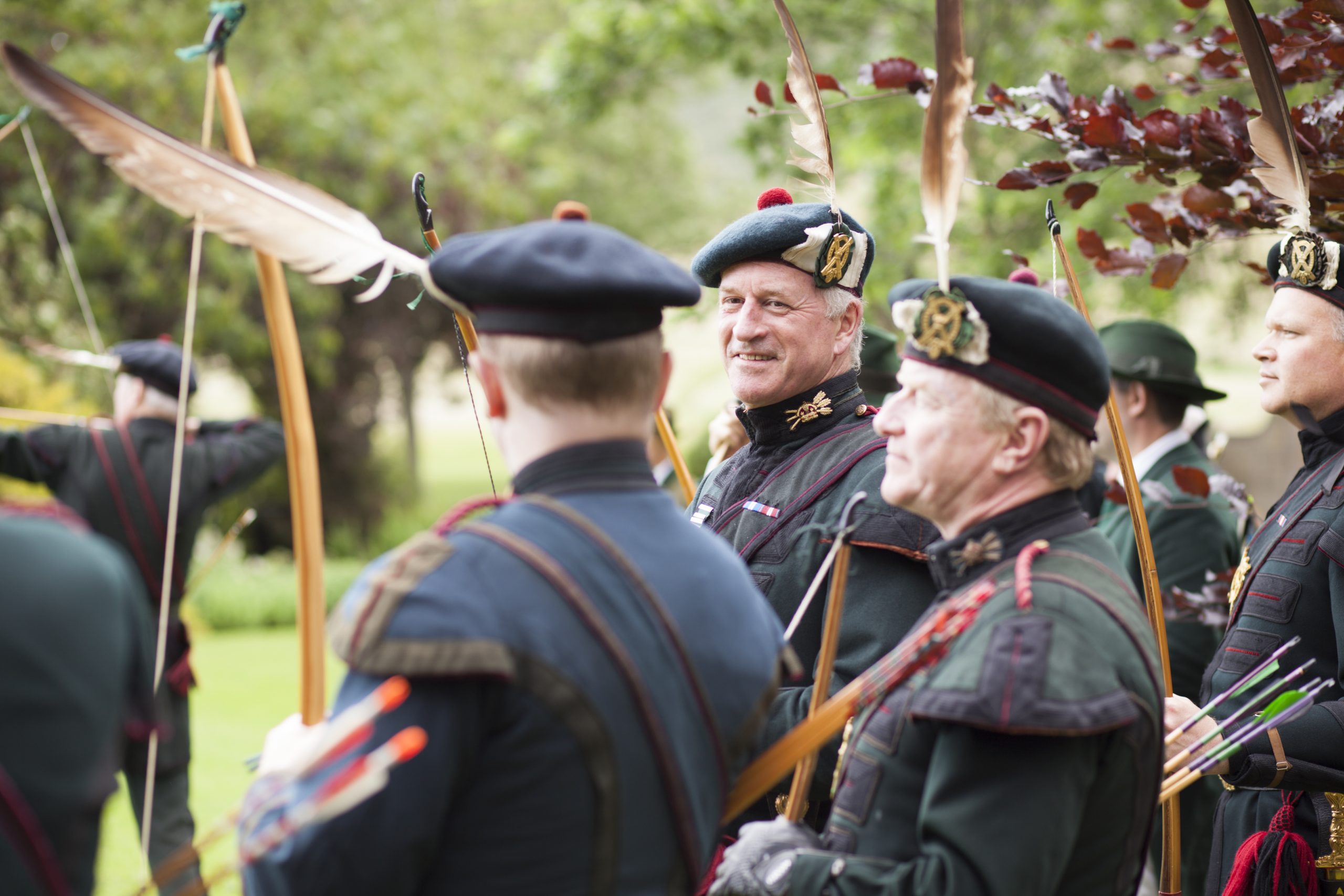The King’s Body Guard for Scotland, The Royal Company of Archers
The Sovereign’s Personal Body Guard for ScotlandThe Royal Company has been the Sovereign’s Personal Bodyguard for Scotland since that honour was conferred by King George IV in 1822. The Honourable Corps of Gentlemen at Arms, formed by King Henry VIII in 1509, and The Body Guard of the Yeomen of the Guard, formed by King Henry VII in 1485, attend the Sovereign in London and Windsor. The Royal Company undertakes duties at the request of The King at any State and ceremonial occasion in Scotland and elsewhere in the United Kingdom as required. ArcheryConstituted in 1676 for the ‘purpose of encouraging the Noble and Useful Recreation of Archery’, The Royal Company received its Royal Charter from Queen Anne in 1704. Archery remains a principal activity to this day and the long bow is still carried by The Royal Company on ceremonial duties. Competitive shooting continues throughout the year either, depending on the season, in the Butts at Archers’ Hall or in the grounds of the Palace of Holyroodhouse. Pre-dating the formation of The Royal Company, The Musselburgh Arrow has been competed for since at least 1603 and may well be the oldest sporting trophy in the world. The Royal Company of Archers’ Charitable TrustThe Royal Company’s charitable arm, The Royal Company of Archers’ Charitable Trust, is a Scottish Charitable Incorporated Organisation. It’s purpose is to ‘carry out activities and to award donations and grants to benefit the arts and heritage, public participation in sport and recreational facilities, especially for the disabled including those who have served in the Armed Services in Scotland, together with the preservation of the heritage and culture of Scotland with a focus on aspects connected to its own history.’ |



